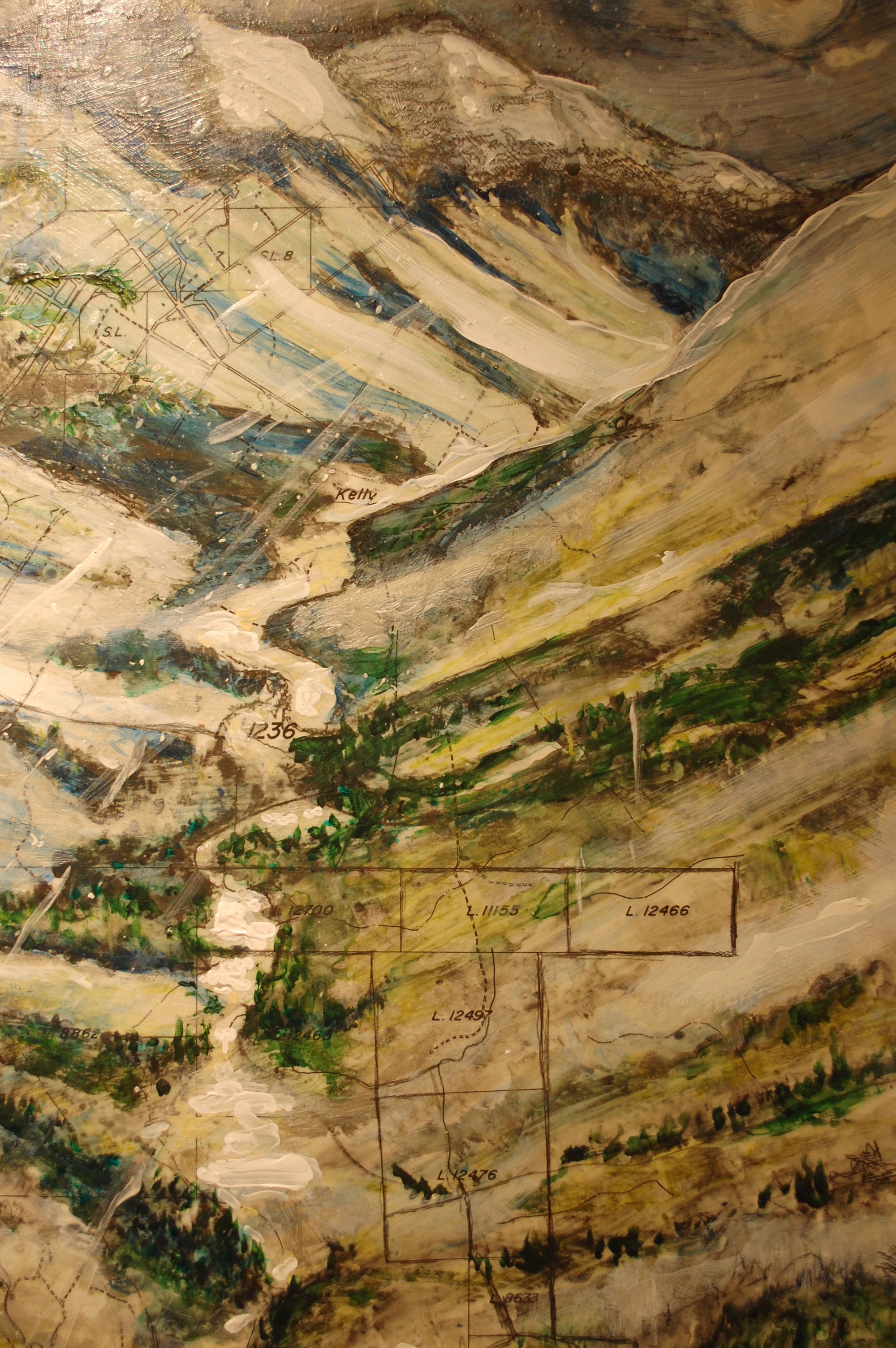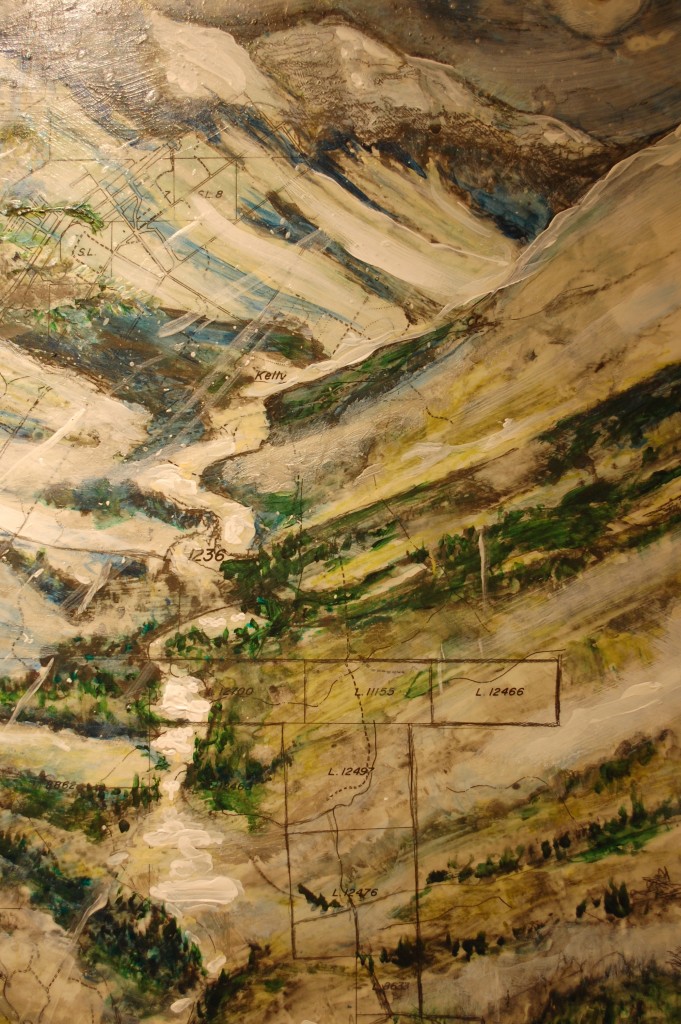By Kodie Cherrille (The Cascade / photo) – Email
The sun was just about to set as the opening reception for the newest exhibition at the Kariton Gallery began.
Our Environment as We See It, a collaborative effort between photographer Len Jellicoe and environmental artist Tracie Stewart, opened to an intimate audience on Saturday, October 17. The exhibition draws on both artists’ love of the geography and wildlife of British Columbia.
Jellicoe is fascinated with birds. Earlier in the day, he ventured out with members of the Field Ornithologists of B.C., and was looking for a rare blue-grey gnatcatcher. His photography extends to more than avian life, but I found myself most drawn to his giclée (a photograph printed onto a canvas) of a long-eared owl, whose plumage mingled with flecks of sunlight broken from overhead trees, eyes half-lidded but vividly yellow.
Other photographs include some very close-up shots of foxes and a mother grizzly bear.
“Getting that close to a grizzly bear really does get your heart rate going,” said Jellicoe.
Tracie Stewart’s work blends history, topography, and memory with nature painting. While some of her works make clear connections — like the landscape painting of a rolling hill on top of a topographical map — others offer near-hallucinatory explorations into colour and texture.
A tree dominates the foreground in her painting “The Boy Who Dares to Dream of Tomorrow”; on the left, fish swim through clear-blue water, the rushing water mimicking the lines of a map that momentarily emerge from the colours. On the right side, a corner of the canvas is foregrounded by the hard lines of a mapped house, which acts like a dazzling prism as it exudes yellows and magentas across the canvas like a dreamy mist. A boy is on a swing set — it is unclear whether the lines are rope or map lines for a road.
Stewart began forging her style after winning maps in an auction.
“They were beautiful,” she said, “and they needed to be shared, but I sat on them for 10 years.”
But then she went to Nine Mile Creek.
“I was driving over the bridge and I usually stop and admire the dam and the view. That’s when I realized what I had to do,” said Stewart.
She began exploring the areas portrayed by the maps, taking photographs, and researching their history online. “The Boy Who Dares to Dream of Tomorrow” is informed by a 1960 map of Surrey, as well as the history of the Kennedy Trail.
For Stewart’s next work, she hopes to make the painting process a little more interactive with her audience. She has put up a large map of B.C. in the back room of the Kariton, requesting that guests place a sticky note with a word or two next to bodies of water that mean something to them.
Our Environment as We See It will continue to be on display at the Kariton Gallery until November 10.



